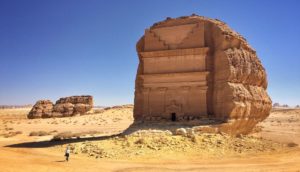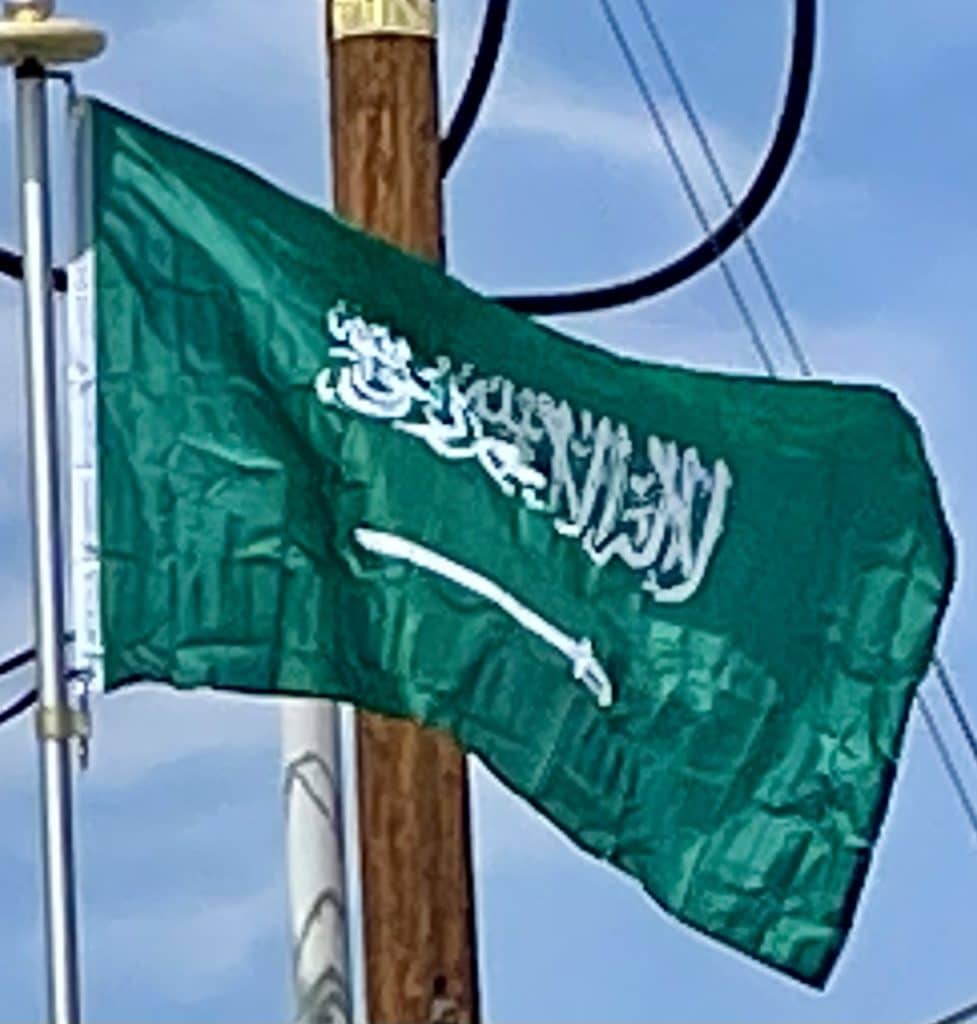
By 2200 BC, the center of Dilmun shifted for unknown reasons from Tarout and the Saudi Arabian mainland to the island of Bahrain.
By the late Bronze Age, a historically recorded people and land (Midian and the Midianites) in the north-western portion of Saudi Arabia are well-documented in the Bible. Centered in Tabouk, it stretched from Wadi Arabah in the north to the area of al-Wejh in the south.
Middle Ages and Rise of Islam:
Shortly before the advent of Islam, apart from urban trading settlements (such as Mecca and Medina), much of what was to become Saudi Arabia was populated by nomadic pastoral tribal societies. The Islamic prophet Muhammad was born in Mecca in about 571 CE. In the early 7th century, Muhammad united the various tribes of the peninsula and created a single Islamic religious polity. Following his death in 632, his followers rapidly expanded the territory under Muslim rule beyond Arabia, conquering huge and unprecedented swathes of territory (from the Iberian Peninsula in the west to modern-day Pakistan in the east) in a matter of decades. Arabia soon became a more politically peripheral region of the Muslim world as the focus shifted to the vast and newly conquered lands.

Arabs originating from modern-day Saudi Arabia, the Hejaz in particular, founded the Rashidun (632–661), Umayyad (661–750), Abbasid (750–1517) and the Fatimid (909–1171) caliphates.
From the 10th century to the early 20th century, Mecca and Medina were under the control of a local Arab ruler known as the Sharif of Mecca, but at most times the Sharif owed allegiance to the ruler of one of the major Islamic empires based in Baghdad, Cairo or Istanbul. Most of the remainder of what became Saudi Arabia reverted to traditional tribal rule.
Ottoman Hejaz:
In the 16th century, the Ottomans added the Red Sea and Persian Gulf coast (the Hejaz, Asir and Al-Ahsa) to the Empire and claimed suzerainty over the interior. One reason was to thwart Portuguese attempts to attack the Red Sea (hence the Hejaz) and the Indian Ocean. Ottoman degree of control over these lands varied over the next four centuries with the fluctuating strength or weakness of the Empire’s central authority.
Foundation of the Saud Dynasty:
The emergence of what was to become the Saudi royal family, known as the Al Saud, began in Nejd in central Arabia in 1744, when Muhammad bin Saud, founder of the dynasty, joined forces with the religious leader Muhammad ibn Abd al-Wahhab, founder of the Wahhabi movement, a strict puritanical form of Sunni Islam. This alliance formed in the 18th century provided the ideological impetus to Saudi expansion and remains the basis of Saudi Arabian dynastic rule today.
The first “Saudi state” established in 1744 in the area around Riyadh, rapidly expanded and briefly controlled most of the present-day territory of Saudi Arabia, sacking Karbala in 1802 and capturing Mecca in 1803, but was destroyed by 1818 by the Ottoman viceroy of Egypt, Mohammed Ali Pasha. A much smaller second “Saudi state”, located mainly in Nejd, was established in 1824. Throughout the rest of the 19th century, the Al Saud contested control of the interior of what was to become Saudi Arabia with another Arabian ruling family, the Al Rashid, who ruled the Emirate of Jabal Shammar. By 1891, the Al Rashid were victorious and the Al Saud were driven into exile in Kuwait.
